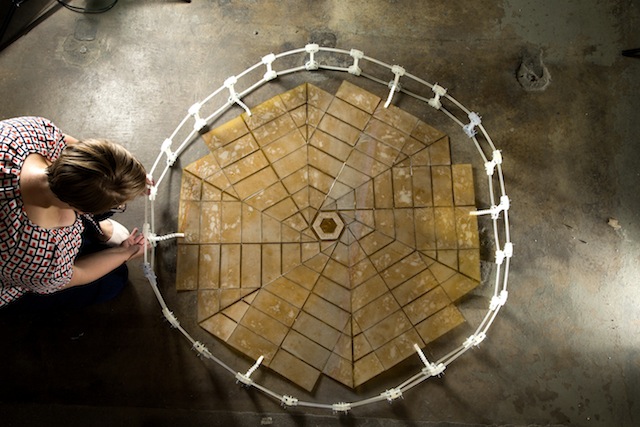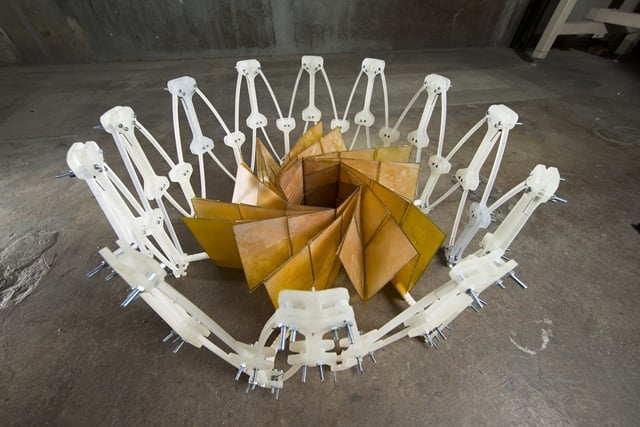Art World
NASA Takes Cues From Ancient Japanese Art of Origami
Will massive unfolding solar panels revolutionize space exploration?

Will massive unfolding solar panels revolutionize space exploration?

Sarah Cascone

The ancient Japanese art of origami has a new, futuristic application in cutting-edge space technology thanks to NASA’s Jet Propulsion Laboratory in Pasadena, California.
The project is the brainchild of Brian Trease, a mechanical engineer at the JPL who has long harbored an interest in the Japanese art form. He enlisted researchers at Brigham Young University in Provo, Utah, including doctoral student Shannon Zirbel and professor Larry Howell, to help him in conducting a study to determine the efficacy of incorporating origami folding techniques into spacecraft components.
“This is a unique crossover of art and culture and technology,” Brian Trease, a mechanical engineer at the JPL said in “Solar Power, Origami Style,” an article published on the NASA website.
“You think of it as ancient art, but people are still inventing new things, enabled by mathematical tools,” he added, noting that in the last 40 years, people have engaged in serious mathematical research into potential technological uses of origami: airbags, for instance, and human tissue engineering.

A prototype for a solar panel array designed for NASA using origami techniques.
Photo: Mark A. Philbrick, courtesy Brigham Young University.
The main application of the art of folded paper that the project has focused on is in solar panels, which already implement simple fan- or accordion-like folds. By comparison, Trease’s more intricate origami would be integral to the objects’ mechanical structure. Currently, the team, which benefited from the assistance of origami artist Robert Lang, has created a working 1:20 scale prototype for an 82-foot-wide solar array that folds down to just 8.9 feet across.
The advantages of origami are obvious: a solar panel that can be folded down to fit in a compact space is simply more efficient, and can be sent in one piece on a single rocket launch. Upon arrival, the panels would only need to be unfolded, with, as Trease points out, “no astronaut assembly required.”
One challenge of the work is that the materials used in solar arrays are much thicker than paper. “You have to rethink a lot of that design in order to accommodate the thickness that starts to accumulate with each bend,” said Trease.
The team employs the Miura fold for their work, an origami fold invented by Japanese astrophysicist Koryo Miura for this exact purpose. When a single corner of the structure is pulled, the array unfolds effortlessly, revealing a large grid of parallelograms. Trease’s prototype also incorporates a number of other types of folds, giving the array a floral appearance.
Watch video of NASA’s origami-inspired solar panel prototype:
[h/t Hyperallergic, PSFK]